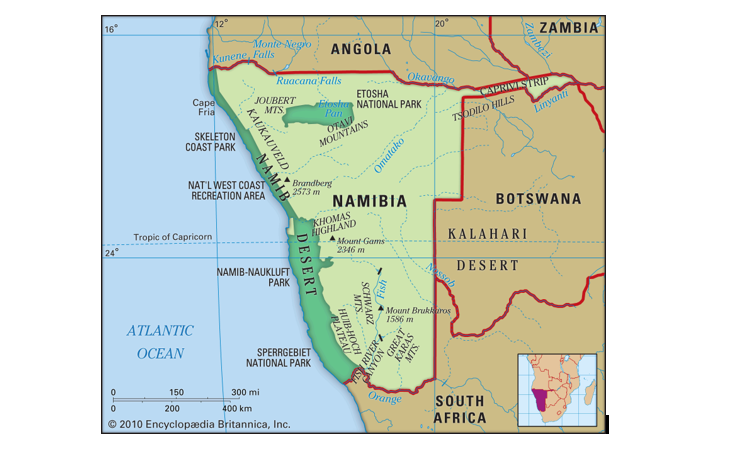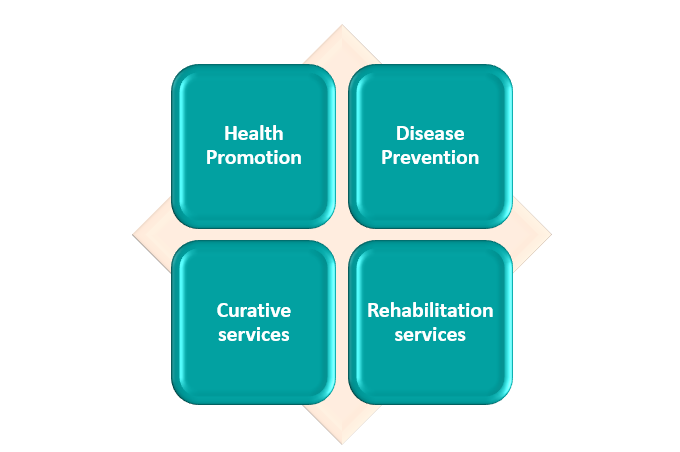Are you planning to build or restructure or venture in any healthcare venture in Namibia? Looking for information about the major healthcare players in government, private diagnostic centers that are available in Namibia? Are you looking to find out which part of the cities is best to venture in or what all facilities are available and what all should be planned for new setup? In this article Hospaccx Healthcare Consultancy has mapped all on major players in terms of medical facilities and healthcare scenario of Namibia. For more details you can visit the website https://hospaccxconsulting.com/ Or contact Hospaccx Healthcare Business Consulting Pvt.ltd. on Hospaccx.India@gmail.com
INTRODUCTION
Namibia is one of the largest and least populated countries in Southern Africa, with a population of 2.67 million in 2023 and a surface area of 824,300 km per square. It is a relatively arid country with the Namib Desert along its west coast and the Kalahari Desert in the east. Because of this, the country has a low population density of three people square kilo meter, with large population clusters along the northern border regions, where rainfall is more plentiful. Namibia has one of the best health care systems in Africa, as measured by both its population-to-doctor and its population-to-hospital-bed ratios. Emphasis is placed on primary and preventative health services, and the country’s system of regional hospitals and mobile clinics has attempted to raise the level of services available in rural locations.
The AIDS epidemic is a serious problem in Namibia. The country has one of the highest infection rates in the world, one in five adults was infected, and the number of HIV/AIDS cases overwhelmed the government’s health care system.

STATISTICS OF NAMIBIA

HEALTH EXPENDITURE
- Total expenditure on health per capita in 2022 was 960 Intl $
- Total expenditure on health as % of GDP (2022) was 9.1%
- The African Union member states’ pledge to devote at least 15% of their budgets to the health sector is exceeded by total government health spending. Health spending in Namibia is among the highest in SADC, accounting for 16.6% of the overall budget in 2023 and an anticipated US$407 (N$6,500.00) per capita average expenditure.
- Therefore, it is urged for the government to continue making this level of expenditure in order to protect the successes and advance the SDGs. The creation of a national health finance strategy to mobilize new and creative resources for the industry could accomplish this.
- Since the Public Service Employee Medical Aid Scheme (PSEMAS), which covers 12% of the population, makes up a considerable share (28.9%) of Total Government Health Expenditure, concerns regarding equity are highlighted. It is vital to evaluate PSEMAS operations and benefit packages in order to reduce the government contribution and produce savings that can be invested in PHC.
HEALTH SYSTEM
- The prominence of PHC in these reforms is reflected in the vision of the MoHSS National Directorate for Primary Health Care Services to translate and oversee the implementation of health policies and programs as an integral part of the health care delivery network based on the strategy and philosophy of primary health care.
- This vision is being realized through both horizontal integration of public health and curative care services, as well as integration across multiple system levels from community health workers to health centers and district hospitals.
- The primary health care in Namibia is centered on four pillars:

- Namibia has developed a vast health care system to meet the geographic spread of its population, which requires a focus on integration and coordination across its tiers. The growing health care demands are complicated by a workforce shortage, as well as gaps in management capacity. Reflecting human resource and other supply side shortages, the public sector is unable to respond to all needed care including specialized services. Some progress has been made through the creation of public-private models to increase the private sector coverage from its current level of 15 percent.
HEALTH INFRASTRUCTURE
- Namibia has 343 hospitals and clinics, as well as 1,150 smaller service points. Health care facilities in the country are sophisticated but not always affordable to the poorer part of the population. Certain services like dialysis and organ transplantations are only available from private medical centres, putting them out of reach for the majority of Namibia’s citizens.
- The capital Windhoek has cardiac theaters at two different hospitals, the Windhoek Central State Hospital and the Roman Catholic Hospital. Both units were opened in 2010 and 2011, respectively, and have been used to perform open-heart surgery, partly with the assistance of foreign personnel.
- The country had 598 physicians – 0.3 per 1,000 inhabitants, and 6,145 midwives and nurses – 3 per 1,000 inhabitants. This number is significantly larger than in the rest of Africa and slightly exceeds the minimum density recommended by the World Health Organization.
MAJOR HOSPITALS IN NAMIBIA
Top Govt/Private Hospitals in Namibia
- Windhoek Central Hospital
Windhoek Central Hospital is a public hospital in Windhoek, Namibia. Together with the Katutura State Hospital, it is one of two State Hospitals in the city.The hospital was commissioned in 1982, and opened in 1984. It has a capacity of 855 beds.
- Katutura State Hospital
Katutura State Hospital is a hospital in Katutura, a black township of Windhoek, Namibia. Together with the Windhoek Central Hospital, it is one of two State Hospitals in the Windhoek area, and Namibia’s only general referral hospital.
It was established in 1973.
- Roman Catholic Private Hospital
The Roman Catholic Hospital is a private hospital in Windhoek, Namibia run by the Roman Catholic Church. It was established in 1907 and has a capacity of 100 beds.
- Lady Pohamba Private Hospital
Lady Pohamba Private Hospital is a pure Namibian owned state-of-the-art hospital that provides patient care through specialized staff and equipment. The Hospital has a 24-hour 14-bed Trauma Unit, 6 Operating Theatres, 2 Surgical Wards (which include 41 beds), a 7-bed Gastro-intestinal Unit, 10-bed Intensive Care and 11-bed High Care Unit, a 34-bed Medical Ward, 11-bed Pediatric Ward, 6-bed Neonatal Intensive Care Unit and a 12-bed Maternity Ward.
- Welwitschia Hospital
The Welwitschia Hospital is a 63 bedded General Hospital catering to the needs of the community of Walvis Bay and the surrounding area. Welwitschia Hospital provides the best medical care in the region. It was established in 1998.
CONCLUSION
Namibia continues to face issues such as a high burden of infectious diseases, including HIV/AIDS, tuberculosis, and malaria. These diseases pose significant challenges to the healthcare system and require ongoing attention and resources. Additionally, there is a shortage of healthcare professionals, especially in rural areas, which affects the quality and accessibility of healthcare services. Moving forward, it is crucial for Namibia to continue strengthening its healthcare system by focusing on preventative care, improving healthcare infrastructure, and addressing the shortage of healthcare professionals. Investments in health education and promotion, as well as collaboration with international partners, can further enhance Namibia’s healthcare scenario.
Above is the superficial and macro level study for in-depth market and financial feasibility studies or any other healthcare-related research needs, please feel free to reach out to us at +91-8655170700 or email us at hospaccx.india@gmail.com . Our team is equipped to provide comprehensive and detailed insights tailored to your specific requirements.
Related Team Members










